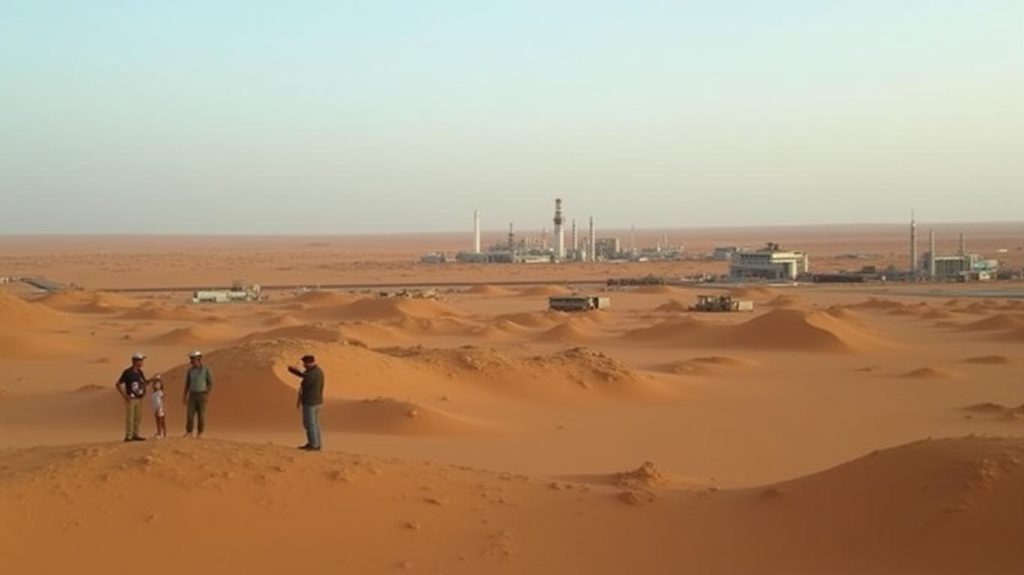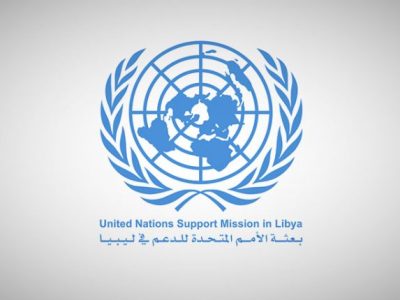Libya’s Moment Amid Middle East Energy Volatility
The Middle East is once again rolling the world’s energy markets. Over recent months, the surging tensions across the region have rattled investor confidence, and reminded governments how easily global oil flows can be imperiled. The sudden escalation between Israel and Iran in June, which brought missile attacks on major cities and threats to the Strait of Hormuz, exposed once again just how fragile the infrastructure underpinning international energy security remains. Iran briefly signaled that it might obstruct shipping through the Gulf’s narrow chokepoint, through which nearly a fifth of the world’s oil passes. Intelligence suggested Iranian forces were preparing naval mines, a move that would have forced insurers to walk away and oil shipments to reroute thousands of miles. The world narrowly avoided that scenario, aided by diplomacy, coupled with an adequate show of force from the United States and Israel to deter further escalation by the Iranian regime. Even so, the anxiety was enough to push Brent futures sharply higher and saddle shipping companies with war risk premiums that doubled insurance costs on voyages through the region.
Meanwhile, Iran’s regional partners did not stay idle. In the Red Sea, Yemen’s Houthis increased their missile and drone attacks on commercial vessels, vowing to punish any intervention against Tehran. More than a hundred strikes have been recorded this year, including attacks that left tankers ablaze. Hezbollah in Lebanon chose not to open a second front, scarred by losses in its last confrontation with Israel. Yet its pledges of solidarity hinted that any miscalculation could still ignite another arena. For oil markets, the cumulative sense of vulnerability has been profound. The summer’s turmoil added a new risk premium to every barrel shipped from the Gulf or through the Suez canal, leaving traders to price in geopolitical hazards that financial models cannot easily quantify.
These developments have revived longstanding debates in Europe and Asia about diversification. Many energy planners are reconsidering the wisdom of relying so heavily on supply routes that must navigate waters patrolled by adversaries. As insurers raise rates and naval forces mobilize to escort tankers, attention is shifting to suppliers whose oil does not have to pass through the world’s most perilous chokepoints. In this recalibration, Libya may be standing out in a way that seemed improbable just a few years ago.
For much of the past decade, Libya was an object lesson in how civil war devastates an oil economy. Since the fall of Muammar Gaddafi, its production has lurched from zero to over a million barrels a day and back again, often dictated by which faction controlled key terminals. Blockades, local grievances, and broader battles repeatedly starved the market of Libya’s crude. The country became a byword for lost potential. Yet beneath the surface, the geology never changed. Libya still holds Africa’s largest proven oil reserves, estimated at close to fifty billion barrels, and its crude remains among the most attractive in the world. Low sulfur content and high API gravity make it especially valuable for refiners who want cleaner products at lower processing cost.
Over the past two years, a fragile political accommodation has allowed this potential to reassert itself. Oilfields and export hubs have largely remained open despite periodic disputes, and international companies have tiptoed back into the nation. In early 2025, Libya’s production climbed to about 1.38 million barrels a day, reaching heights last seen before the worst episodes of conflict. Libya’s National Oil Company (NOC) speaks of lifting output to 1.6 million and beyond. Whether these targets are realistic depends on the durability of internal agreements and the willingness of foreign partners to invest in infrastructure that has suffered years of neglect. What is clearer is that Libya’s position as a nearby, high-quality supplier is more strategically significant today than at any point since the revolution.
Europe, in particular, sees advantages in relying more heavily on this North African neighbour. Tankers departing Libyan ports can reach southern Europe in mere days, bypassing both the Strait of Hormuz and the Bab al Mandab. The cost savings are measurable, but the real benefit is strategic. A shipment that does not traverse contested Gulf waters or rely on the Suez Canal is inherently less exposed to regional conflict. In an environment where insurance costs have soared for voyages through the Red Sea and where a single misfired drone could shut a key lane, this proximity matters more than ever.
China has also shown renewed interest. Its companies once held stakes in Libyan fields before the civil war interrupted operations. Recent diplomatic overtures suggest Beijing would welcome opportunities to expand again, integrating Libyan oil into its broader Belt and Road networks that stretch across Africa and the Middle East. This mirrors China’s broader strategy of securing diversified supplies that can mitigate risk if tensions with the United States or turmoil in the Gulf were to intensify. Libya’s oil, largely immune to the naval flashpoints that threaten shipments from the Persian Gulf, fits neatly into this approach.
For Libya, these geopolitical shifts represent a remarkable chance to move beyond the cycle of dependency on any single buyer or patron. The country finds itself courted by Europe seeking stable alternatives to Russian flows and by Asian economies wary of chokepoints. High global prices amplify the stakes. Every additional hundred thousand barrels Libya can pump is worth millions each day to a treasury that relies on hydrocarbons for nearly all its income. This windfall could finance the schools, hospitals, and rebuilding that Libyans have long awaited through years of turmoil. It could also help stabilize the currency and render future fiscal crises less acute.
None of this is guaranteed. Libya’s political order remains precarious. The divisions between east and west are yet to be resolved by elections or a unified security apparatus. Generals and militias still exert leverage by controlling the oilfields and terminals. Investors recall how quickly optimism can fade when local grievances flare into armed blockades. To capitalize on its moment, Libya must navigate its own internal reconciliations with care. The leadership in Tripoli and Benghazi will need to uphold revenue-sharing arrangements that keep all sides invested in the system’s continuity. Transparency in how oil earnings are managed will be critical to maintaining both domestic rust and foreign confidence.
Yet the broader forces reshaping global energy provide Libya with a unique hand to play. In a world jittery over whether missiles will close Hormuz or insurgents will strike Red Sea lanes, a nearby producer with premium crude and relatively short sailing distances has rare appeal. It would be a far cry to suggest that Libya is emerging because it has solved its own problems. The truth is, others’ problems have grown more severe. And that counts for something. This creates a narrow window to turn geological luck and natural wealth into something more lasting: a reputation as a steady supplier whose barrels ease fears when the Middle East trembles. If Libyan leaders can preserve the calm that has allowed production to rebound and continue inviting credible partners to modernize infrastructure, this moment of regional volatility could become the foundation for a more secure future for the nation. The world is watching to see if the opportunity holds. For Libya, it is a chance to step back onto the global stage with leverage and purpose.




